Container Gardening |
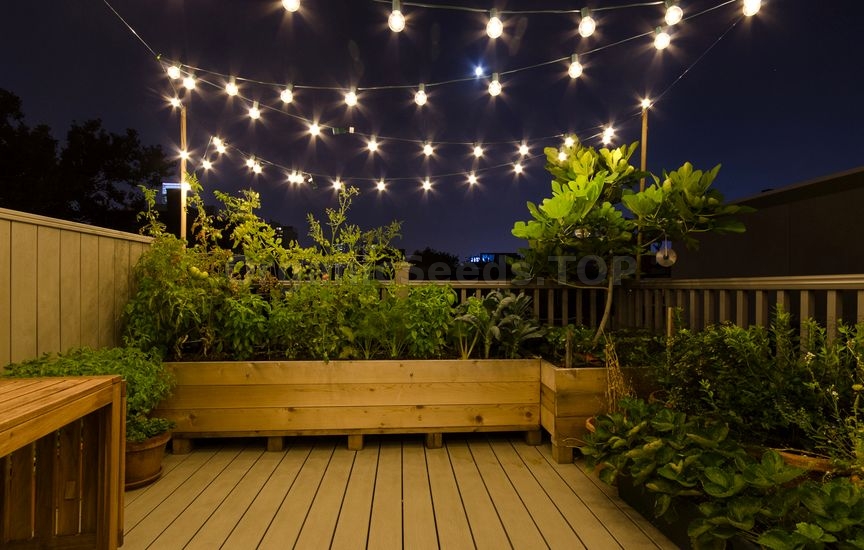 More and more people are learning about the benefits of gardening in a container. With an apartment balcony, courtyard, deck or front porch, it is possible to grow a wide variety of plants. Maybe a lack of space is not the problem, but a lack of time is. Maintaining a large landscape or garden takes time, and many gardeners find that growing a few containers of their favorite flowers, herbs, and vegetables is all that they have time for. Container gardening is a great option for limited spaces, for adding a decorative element to the existing landscape, for beginning gardeners, and for those who have little time. Many, many plants can be grown successfully in containers, but there are a few basic needs to be considered. Containers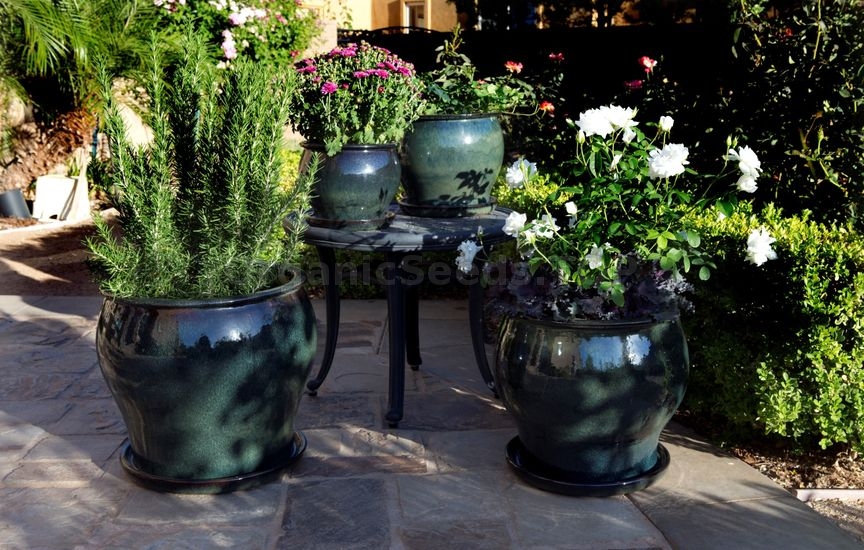 There is a wide array of containers that can be used or made that are suitable for growing plants. Purchased containers can be made of wood, clay, metal, ceramic, fiber, or plastics. But common items around the home can also be used, like buckets, trash cans, crates, milk cartons, old boots or old bathtubs and the list could go on and on. If crates or wire baskets are being used, it is best to line them with sphagnum moss or coconut coir to help keep the soil in place.
Whatever container is used, it must provide the following:
 If using a container that does not have drainage holes, use a growing container with bottom holes and a spacer. For a spacer, place a small brick in the bottom of the container without holes, and place the growing container inside the decorative container on top of the brick. The slight elevation will allow proper drainage. Take precautions during periods of heavy rain, and remove the growing pots, as the excess water can drown the plants. Watering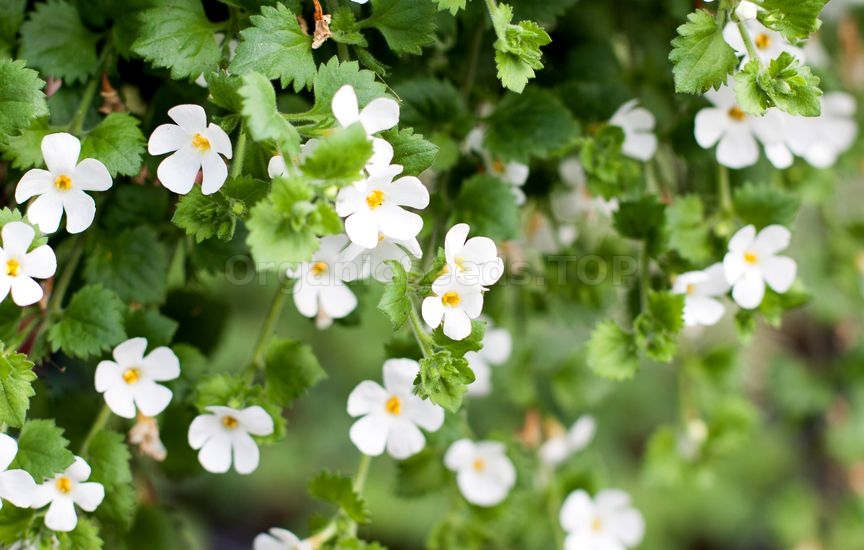 In general, container gardens require a more frequent watering schedule than plantings that are in the garden or landscape. Allowing the containers to dry out completely may kill the fine plant roots. Depending on the temperatures and the location of the containers, watering can be daily to every couple of days. Check the containers daily for soil dryness. Fertilizing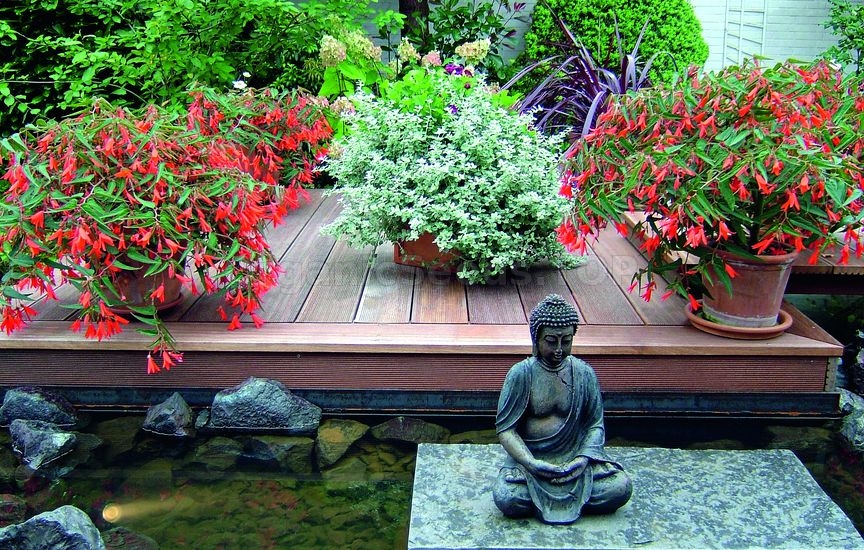 Most commercial potting mixes are lower in nutrients, although some now have time-released fertilizer pellets. An option is to mix the growing mix with compost, 3 parts potting mix to 1 part compost, or to purchase the slow-release fertilizer pellets and add some to the soil. Water-soluble fertilizer applications are the most recommended way to provide nutrients to container plants. It is important to follow the package directions, as too much fertilizer can damage, and even kill plants.
Light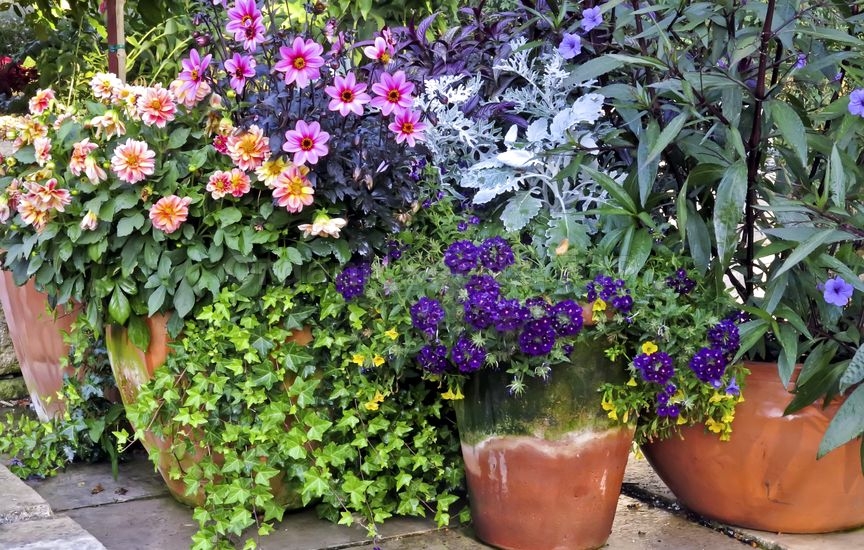 Most vegetables, herbs and flowers need full sun for healthy growth and for producing a crop. Place containers where they will receive at least 6 hours of sunlight each day. Reflected sunlight can be damaging to plants. Light reflecting off of lightly colored buildings, paving, and western exposure may provide a risk of sun scald. Containers can be moved. If the plants are not thriving due to too little or too much light, find a new location.
Selecting plants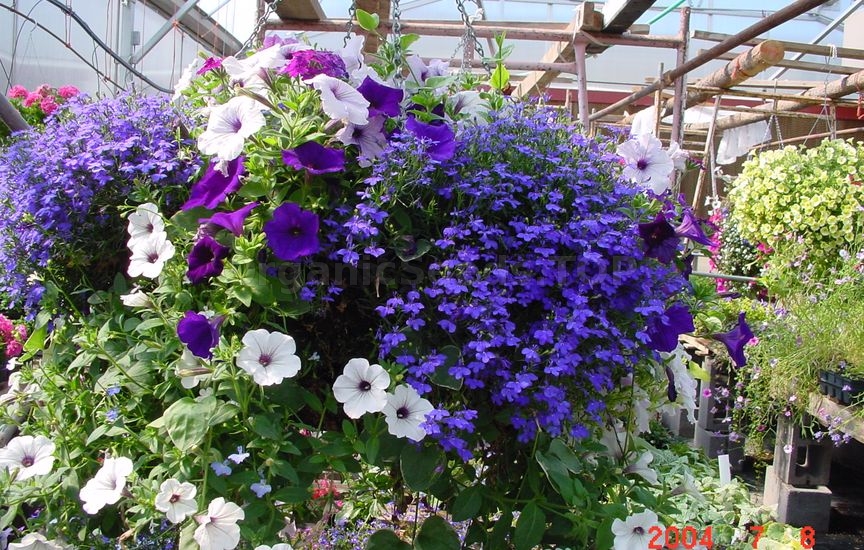 There are many plants that are well-suited to being grown in a container. This list just includes a few suggestions
:
When selecting more than one species for a container, make the most of the combinations by varying the plant size, form, color and texture. Taller plants usually are placed in the center with shorter and trailing plants positioned near the sides. Also, take into consideration the needs of the plants for light and water, matching plants together with similar cultural needs. Planting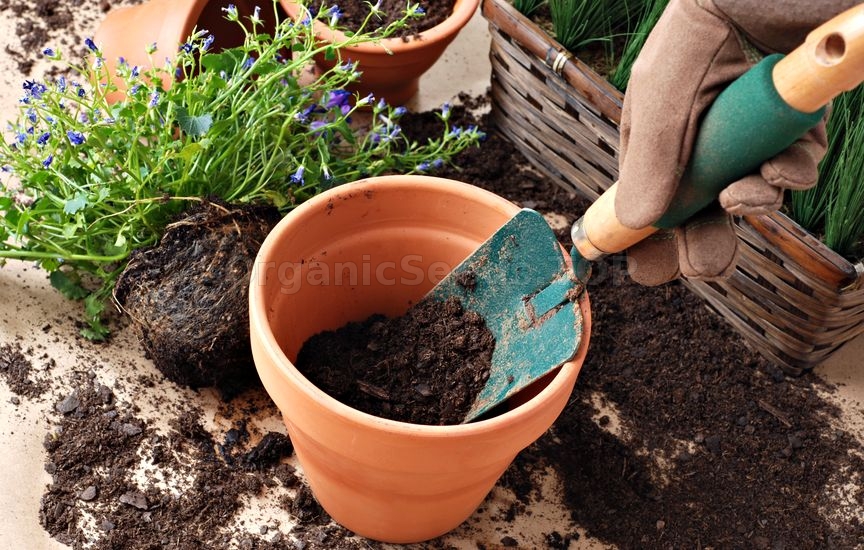 Seeds can be planted directly in the container: thoroughly water the soil mix, plant the seeds at the depth indicated on the seed package, place the container in a warm place, and keep the seeds moist. Thin the seedlings to prevent overcrowding. If transplanting, start with shorter, stocky plants that are not yet blooming. Keep the root ball intact and water thoroughly after planting.
Grooming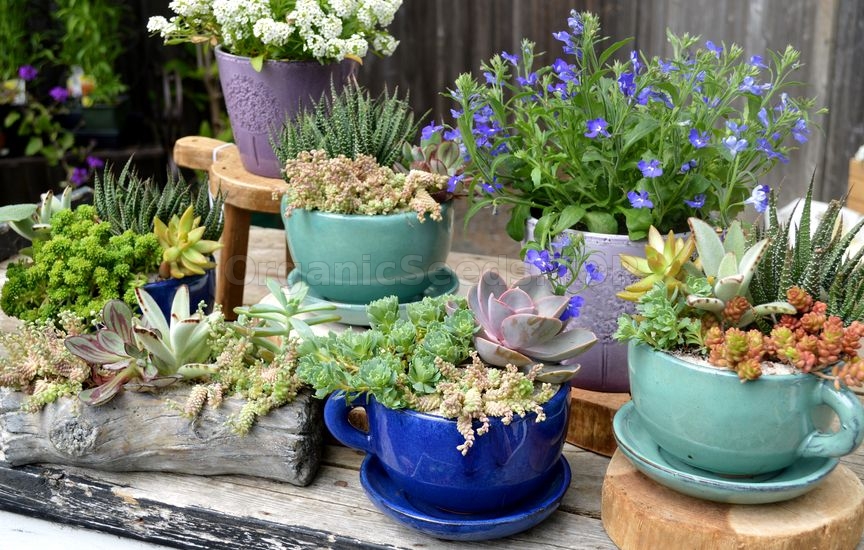 Flowers can be encouraged to bloom longer and more profusely if the spent blooms are deadheaded. Vegetables also are encouraged to produce a more abundant crop if the fruits are kept picked as they mature. Inspect the plants for pests and disease; insects can be removed by hand, and remove any infected or dead leaves or flowers for good sanitation.
Overwintering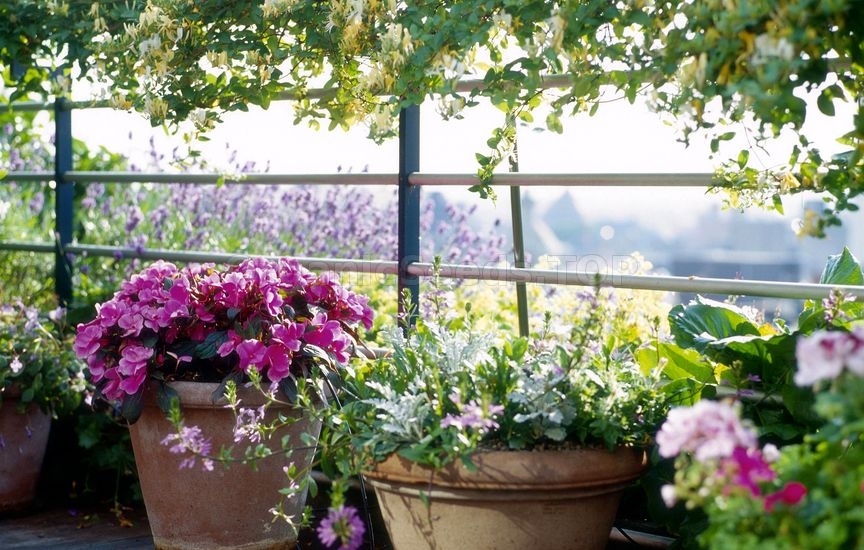 Containers that are porous will crack if the soil inside is allowed to freeze and thaw throughout the winter. Often perennials, ornamental grasses, and woody plants are treated as annuals in containers and not overwintered. Containers can be moved to a protected porch or patio where the plants can be watered throughout the winter, or plants can be transplanted into the garden for over wintering. All growing media and annual plants should be composted at the end of the growing season. In the spring, disinfect containers with a 10% solution of chlorine bleach, and start with fresh growing media. Container gardening is rising in popularity and is nearly becoming an art form. The lack of space does not have to diminish your passion to grow plants of all kinds. Gardens can show up in window boxes, balconies, rooftops and entry-ways. The possibilities are endless and the satisfaction tremendous! You may need:Herb SeedsPerennialsAnnualsTreesShrubs |
|
|
